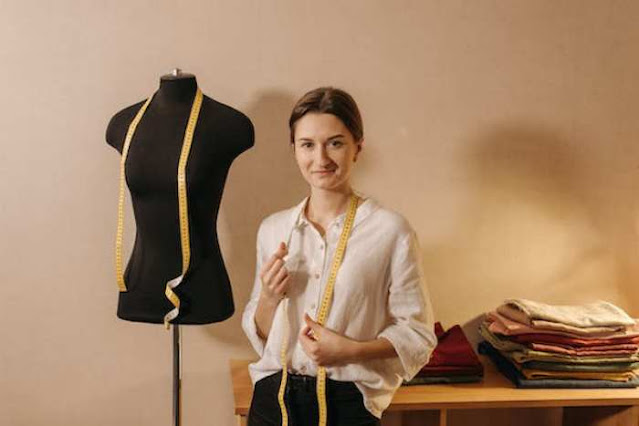
Introduction
Jewelry design is a creative and intricate art form that
combines artistic vision, technical skills, and craftsmanship to create
exquisite pieces of wearable art. This comprehensive article will explore the
world of jewelry design, including its definition, historical significance, the
process of becoming a jewelry designer, and the skills required to succeed in
this competitive industry. From ancient civilizations to modern-day trends,
join us as we unravel the fascinating journey of jewelry design and discover
the steps you can take to embark on a career in this glamorous and rewarding
field.
Definition and Scope of Jewellery Design
Introduction to Jewellery Design: Understand the essence of
jewelry design, which involves the creation and crafting of unique and
aesthetically pleasing pieces using a variety of precious metals, gemstones,
and other materials.
Elements of Design: Explore the key design elements,
including shape, color, texture, balance, and proportion, that jewelry
designers employ to create visually appealing and harmonious pieces.
Functionality and Wearability: Learn about the importance of
considering wearability and comfort when designing jewelry, ensuring that the
pieces look stunning and practical.
Historical Significance of Jewellery Design
Ancient Origins: Dive into the history of jewelry design,
tracing its roots back to ancient civilizations such as Egypt, Mesopotamia, and
Indus Valley, where jewelry served religious, cultural, and status symbol
purposes.
Influence of Royal Courts: Discover how jewelry design
evolved during the Renaissance and Baroque periods, with royal courts and
nobility commissioning elegant pieces to display wealth and power.
Art Nouveau and Art Deco Eras: Explore the creative
movements of the late 19th and early 20th centuries, which brought innovative
designs characterized by flowing lines, nature-inspired motifs, and geometric
forms.
Contemporary Trends: Learn about the evolution of jewelry
design in the modern era, including the rise of minimalist, abstract, and
experimental styles, as well as the incorporation of unconventional materials
and technology.
Becoming a Jewellery Designer
Education and Training: Explore the different educational
paths available to aspiring jewelry designers, including formal degree
programs, apprenticeships, and specialized design courses.
Developing Technical Skills: Understand the importance of
acquiring technical skills in sketching, computer-aided design (CAD), wax
carving, metalworking, gemology, and stone setting.
Building a Portfolio: Learn how to build a strong portfolio
that showcases your design aesthetic, creativity, and technical proficiency,
which is crucial for securing internships, jobs, or attracting clients as freelance
designer.
Gaining Experience: Discover the value of gaining practical
experience through internships, apprenticeships, or working for established
jewelry design houses to refine your skills, expand your network, and
understand the industry dynamics.
Entrepreneurship and Freelancing: Consider starting your own
jewelry design business or working as a freelance designer, and learn about the
necessary steps to establish a brand, market your designs, and manage the
business aspects.
Skills and Traits of a Successful Jewellery Designer
Creativity and Artistic Vision: Explore the importance of
creativity in jewelry design, including the ability to conceptualize unique
designs, experiment with materials and techniques, and push the boundaries of
traditional design.
Attention to Detail: Understand the significance of
precision and meticulousness in jewelry design, as even the tiniest details can
greatly impact a piece's overall aesthetics and quality.
Knowledge of Materials and Techniques: Familiarize yourself
with various metals, gemstones, and manufacturing techniques, as well as the
ability to select the right materials to achieve the desired design and ensure
structural integrity.
Trend Awareness: Stay updated with the latest fashion and
jewelry trends, consumer preferences, and market demands to create designs that
appeal to contemporary tastes and meet customer expectations.
Communication and Collaboration: Develop effective
communication skills to collaborate with clients, manufacturers, gemstone
suppliers, and other professionals involved in the jewelry design process.
Jewellery Design and Ethical Considerations
Responsible Sourcing: Understand the importance of ethical
practices in the jewelry industry, such as sourcing materials from ethical and
sustainable suppliers, promoting fair trade, and avoiding conflict minerals.
Environmental Impact: Consider the environmental impact of
jewelry production and explore options for using recycled materials,
implementing eco-friendly practices, and advocating for responsible
manufacturing processes.
Conclusion
Jewelry design is a captivating blend of artistic
expression, technical expertise, and cultural significance. The art form has
evolved and adapted from ancient civilizations to contemporary trends. Aspiring
jewelry designers can embark on a fulfilling career in this glamorous industry
by understanding the historical importance, developing the necessary skills, and
embracing creativity and innovation. Whether designing custom pieces for
clients or creating collections for renowned brands, jewelry design offers
endless opportunities for self-expression and creating timeless and cherished parts
of wearable art.